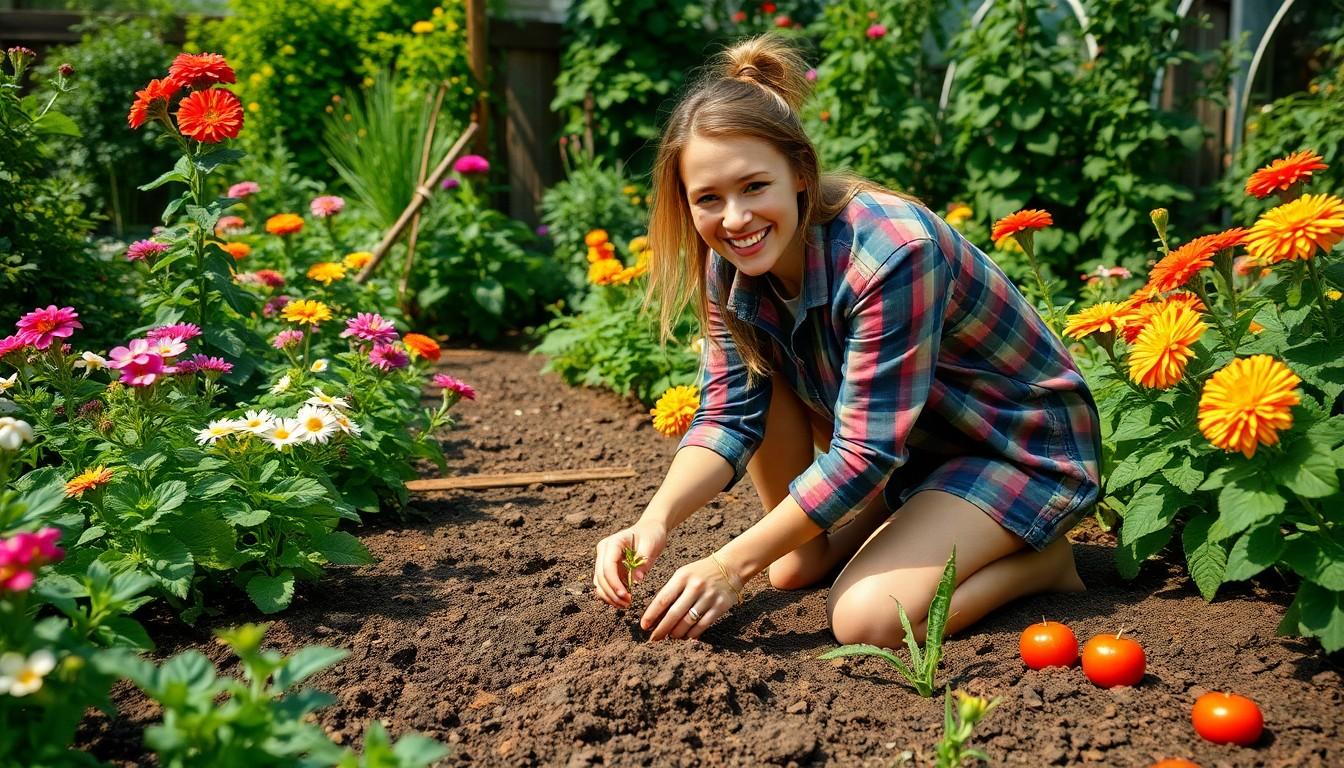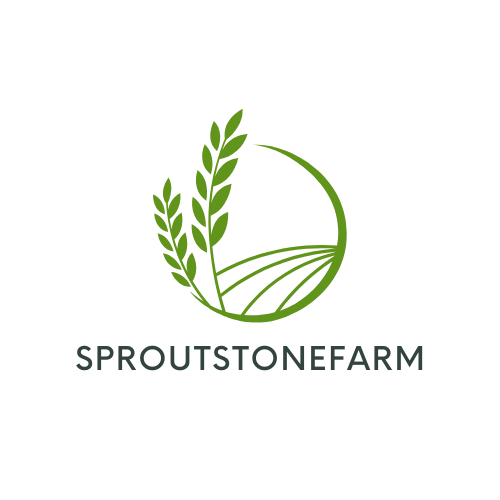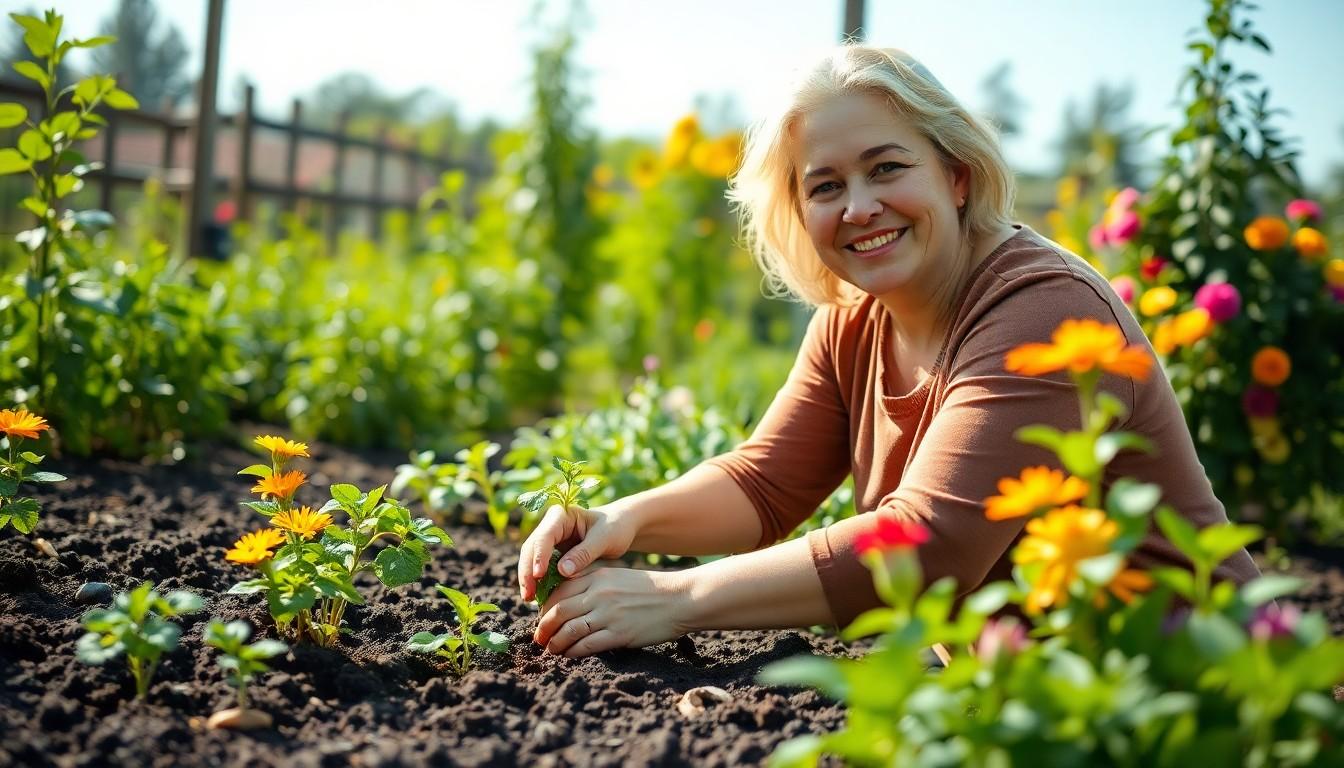Imagine stepping into your backyard and plucking fresh tomatoes, crisp lettuce, and fragrant herbs—all without a trip to the grocery store. Self-sufficiency gardening isn’t just a trend; it’s a lifestyle choice that lets anyone channel their inner farmer while saving money and reducing their carbon footprint. Who knew that growing your own food could be so rewarding and, dare we say, a little bit fun?
Self-Sufficiency Gardening
Self-sufficiency gardening involves growing food and plants to meet personal needs without dependence on external sources. This practice fosters independence and sustainability through the cultivation of vegetables, fruits, and herbs. Individuals engaging in self-sufficiency gardening can produce fresh, nutritious produce directly from their yards or community spaces.
Creating a self-sufficient garden necessitates understanding local growing conditions, soil health, and seasonal changes. Tools like composting and organic pest control enhance soil fertility and sustainability. Many gardeners prioritize native plants, as these species often require less water and are more resilient to local pests.
Growers experience significant economic benefits from self-sufficiency gardening. Reducing grocery bills happens as families cultivate their foods rather than purchasing them. Additionally, lowering one’s carbon footprint becomes feasible by eliminating food transport emissions associated with store-bought produce.
Community connections often strengthen through shared gardening experiences and knowledge exchange. Neighbors may band together to share resources, seeds, or gardening tips, fostering camaraderie and collaboration. This approach not only cultivates plants but also nurtures relationships among individuals committed to sustainable living.
Ultimately, self-sufficiency gardening empowers individuals to take control of their food sources, promote environmental sustainability, and embrace a fulfilling lifestyle rooted in nature. Gardening becomes an enjoyable activity that nurtures both the body and the spirit, creating a sense of accomplishment and well-being.
Benefits of Self-Sufficiency Gardening

Self-sufficiency gardening provides numerous advantages that extend beyond the garden. Individuals enjoy a deeper connection to their food sources while promoting sustainability.
Environmental Impact
Self-sufficiency gardening significantly reduces carbon footprints. Growing food at home eliminates the energy-consuming transport processes associated with store-bought produce. Many gardeners also promote biodiversity by cultivating native plants. Native species support local ecosystems and require less water and maintenance. Furthermore, organic gardening practices enhance soil health, leading to healthier ecosystems. Composting enriches soil and minimizes waste, contributing positively to local environments. Overall, adopting self-sufficiency gardening fosters a greener lifestyle.
Health Advantages
The health benefits of self-sufficiency gardening are substantial. Individuals access fresh produce without harmful pesticides or additives. Homegrown vegetables and fruits offer superior nutritional value compared to store options. Gardeners engage in physical activity through planting, weeding, and harvesting, improving overall fitness. Additionally, gardening promotes mental well-being by reducing stress and enhancing mood. Exposure to soil and nature fosters mindfulness, contributing to emotional health. Therefore, cultivating a garden enriches both body and mind, creating a holistic approach to health.
Essential Tools and Supplies
Having the right tools and supplies is crucial for successful self-sufficiency gardening. Proper equipment enables efficient gardening, ensuring efforts yield abundant harvests.
Gardening Tools
Essential gardening tools include hand trowels, pruners, and hoe. A hand trowel makes planting and digging precise, while pruners effectively trim plants and encourage growth. Hoe helps in weed removal and soil aeration. Ergonomic tools reduce strain, promoting comfort during extended use. Garden gloves protect hands from dirt and punctures. Durable containers and raised beds improve organization, making it easier to manage space. Selecting quality tools enhances the gardening experience.
Soil and Fertilizers
Quality soil forms the foundation of self-sufficiency gardening. Organic compost enriches soil with nutrients, promoting healthy plant growth. Selecting the right type of soil, such as loamy or sandy, enhances drainage and aeration. Fertilizers made from natural ingredients support sustainable gardening practices. Using compost tea provides an additional boost, delivering liquid nutrients directly to plants. Mulching conserves moisture, regulates temperature, and suppresses weeds. Regular soil testing helps identify nutrient deficiencies, ensuring plants thrive throughout the growing season.
Getting Started with Self-Sufficiency Gardening
Self-sufficiency gardening involves careful planning and execution. Beginners can choose effective strategies and tools to ensure success.
Choosing the Right Location
Selecting an optimal garden spot is crucial. Sunlight exposure significantly affects plant growth; a location receiving six to eight hours of sunlight each day is ideal. Drainage matters as well; avoid areas where water tends to pool. Soil quality in the chosen area plays a vital role; it’s essential to evaluate its structure and composition. Proximity to a water source simplifies irrigation tasks, making maintenance easier. Observing the microclimate helps in understanding local weather patterns that may affect plant development. Additionally, placing the garden near the home increases accessibility, encouraging regular visits and care.
Planning Your Garden Layout
Developing an effective garden layout enhances productivity. Companion planting optimizes space and reduces pest issues; for example, growing tomatoes alongside basil can improve flavor and deter insects. Rows or raised beds can facilitate organization, ensuring proper spacing for plant growth. Vertical gardening techniques save space while boosting yields; trellises support climbing plants such as beans and cucumbers. Zones for herbs, vegetables, and berries help maintain clarity and focus for gardeners. Including pathways improves access to all plants, allowing for easy maintenance and harvesting. Efficient irrigation systems ensure consistent water supply, promoting healthy crop yields and preventing waste.
Tips for Successful Gardening
Gardening success hinges on understanding various strategies for maintenance and cultivation.
Pest Management
Effective pest management safeguards plants from damage. Using organic methods, like introducing beneficial insects, promotes natural pest control. Companion planting, such as pairing marigolds with vegetables, deters unwanted pests. Regularly inspecting plants for early signs of infestation can prevent larger issues. Applying neem oil or insecticidal soap targets pests without harming the environment. Maintaining healthy soil supports plants’ resilience against pests. Keeping the garden clean and debris-free reduces pest habitats. These proactive approaches enhance overall garden health, leading to bountiful harvests.
Seasonal Planting Strategies
Timing plays a crucial role in seasonal planting. Selecting crops tailored for specific seasons enhances growth potential. Spring planting often includes cool-season crops like peas and lettuce, while summer allows for heat-loving varieties such as tomatoes and peppers. Knowing local frost dates helps determine planting schedules. Rotating crops yearly protects soil health and reduces disease risk. Incorporating layers in planting, like spring bulbs followed by summer flowers, maximizes garden space. Utilizing cloches or row covers extends the growing season for vulnerable plants. Adapting a seasonal strategy ensures a productive and diverse garden throughout the year.
Independence and Sustainability
Self-sufficiency gardening offers a rewarding pathway to greater independence and sustainability. By cultivating their own food, individuals not only enhance their physical health but also contribute positively to the environment. This practice fosters a deeper connection with nature while promoting community ties through shared gardening experiences.
With the right tools and techniques, anyone can embark on this fulfilling journey. Embracing self-sufficiency gardening means taking charge of one’s food sources and enjoying the numerous benefits that come with it. As more people engage in this lifestyle, the impact on personal well-being and the planet becomes increasingly significant.

